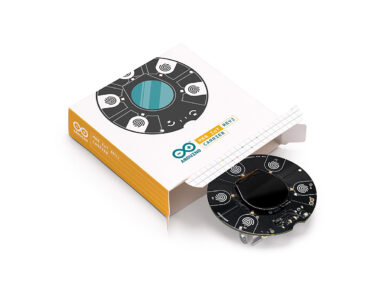
J-Link PLUS Compact
Sold outUSB powered JTAG debug probe supporting a large number of CPU cores.
Based on a 32-bit RISC CPU, it can communicate at high speed with the supported target CPUs.
SEGGER J-Link PLUS Compact is used around the world in tens of thousand places for development and production (flash programming) purposes.
Overview
Get the SEGGER J-Link PLUS Compact debug probe: a compact version of the J-Link PLUS. Mounts securely & unobtrusively into development and end user equipment.
Based on 32-bit RISC CPU, it communicates at high speed with supported target CPUs.
Thanks to a small size with two mounting holes, it can be placed into existing equipment housings.
Space can also be reserved for direct-to-PCB mounting.
All major IDEs (Eclipse & GDB-based IDEs) support J-Link debug probes, as does SEGGER Embedded Studio. 500,000 J-Links have been shipped so far, making this probably the most popular debug probe on the market for Arm cores and the de-facto standard.
Further Advantages
The SEGGER J-Link PLUS Compact has a built-in VCOM functionality and integrated licenses for unlimited breakpoints in flash memory, RDI/RDDI and J-Flash. It supports direct download into RAM and flash memory. It has a broad range of supported microcontrollers and CPUs.
Box Contents
- SEGGER J-Link PLUS Compact debug probe
- Micro USB cable
- 1" 20-pin ribbon cable (18 cm)
- Includes free software updates and one year of email support.
SEGGER J-Link debuggers are the most popular choice for optimizing the debugging and flash programming experience.
Documentation
Debugging with the Arduino IDE 2.0
Learn how to set up a Zero board, J-Link and Atmel-ICE debuggers with the Arduino IDE 2.0, and how to debug a program.
Using the Segger J-Link debugger with the MKR boards
Learn how to set up a MKR board with the Segger J-link debugger.
Get Inspired
Control everything with a SINGLE phone call.

… between the Rev2 and the previous version of the MKR IoT Carrier. Here are the main ones. Some sensors have changed: The humidity sensor (HTS221) and barometric pressure sensor (LP22HB) has been replaced with the BME688 sensor.The IMU (LSM6DS3) was replaced with LSM6DSOX. Following customer feedback some other components have been repositioned: Addition of a handy reset button90° rotation of the relay connectorsRepositioning of the light sensor (APDS-9960)Change of pins assigned to control the relays to pins 1 and 2Change grove connector assignment from pin A5 to A6 Do I have to change my sketch if I have been using the first revision of the MKR IoT Carrier? No — the MKR IoT Carrier library works with both revisions of the carrier. Just make sure to use the latest version of the library to ensure everything goes smoothly. Have more fun with the IoT The new MKR IoT Carrier Rev2 is the perfect tool to get started having fun with your own IoT projects, or to take your IoT tinkering to the next level. You don’t need a ton of experience, a bucket of expensive components, or endless hours of free time to build your own satisfying, useful IoT gadgets at home. Discover the MKR IoT Carrier Rev2





